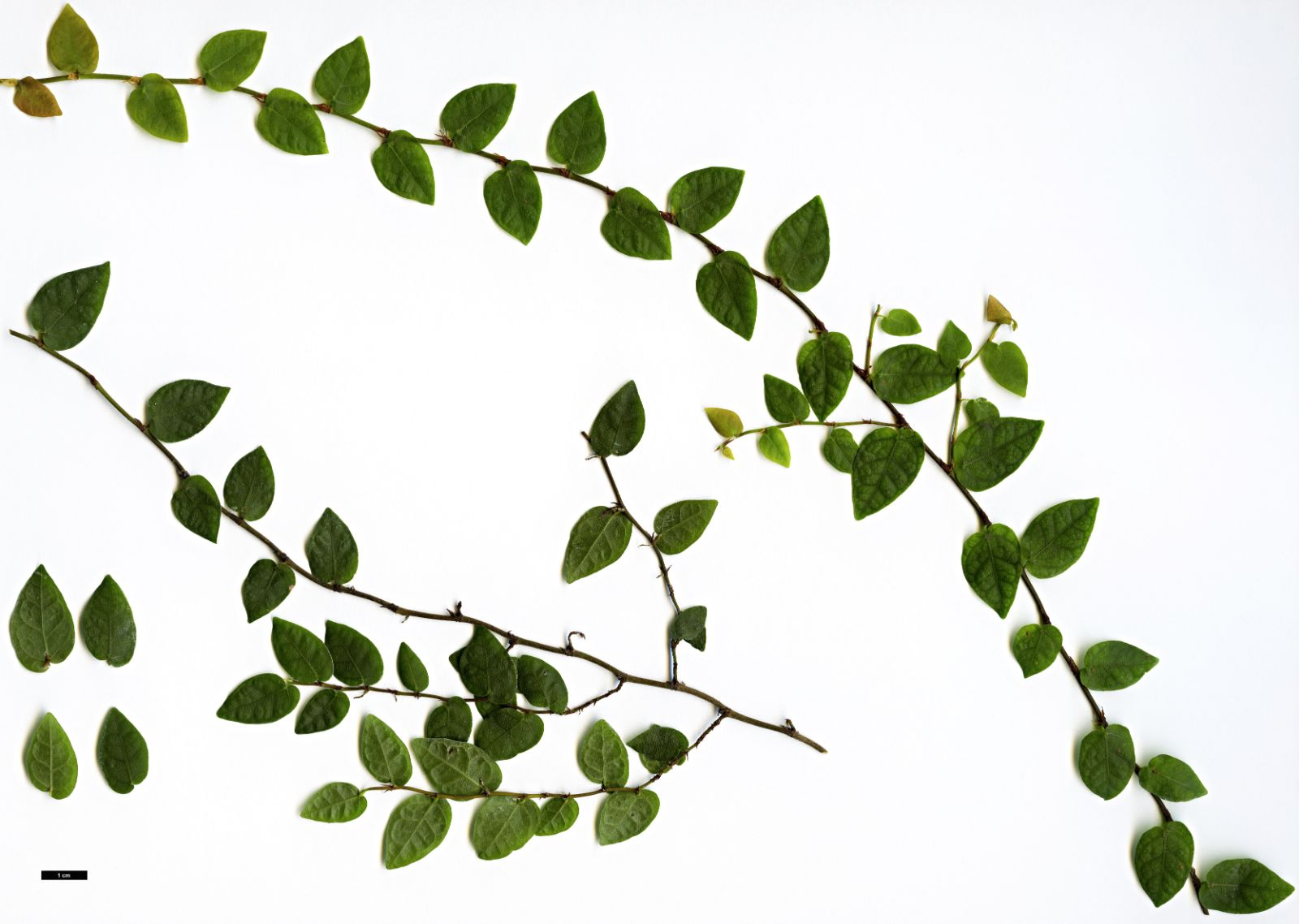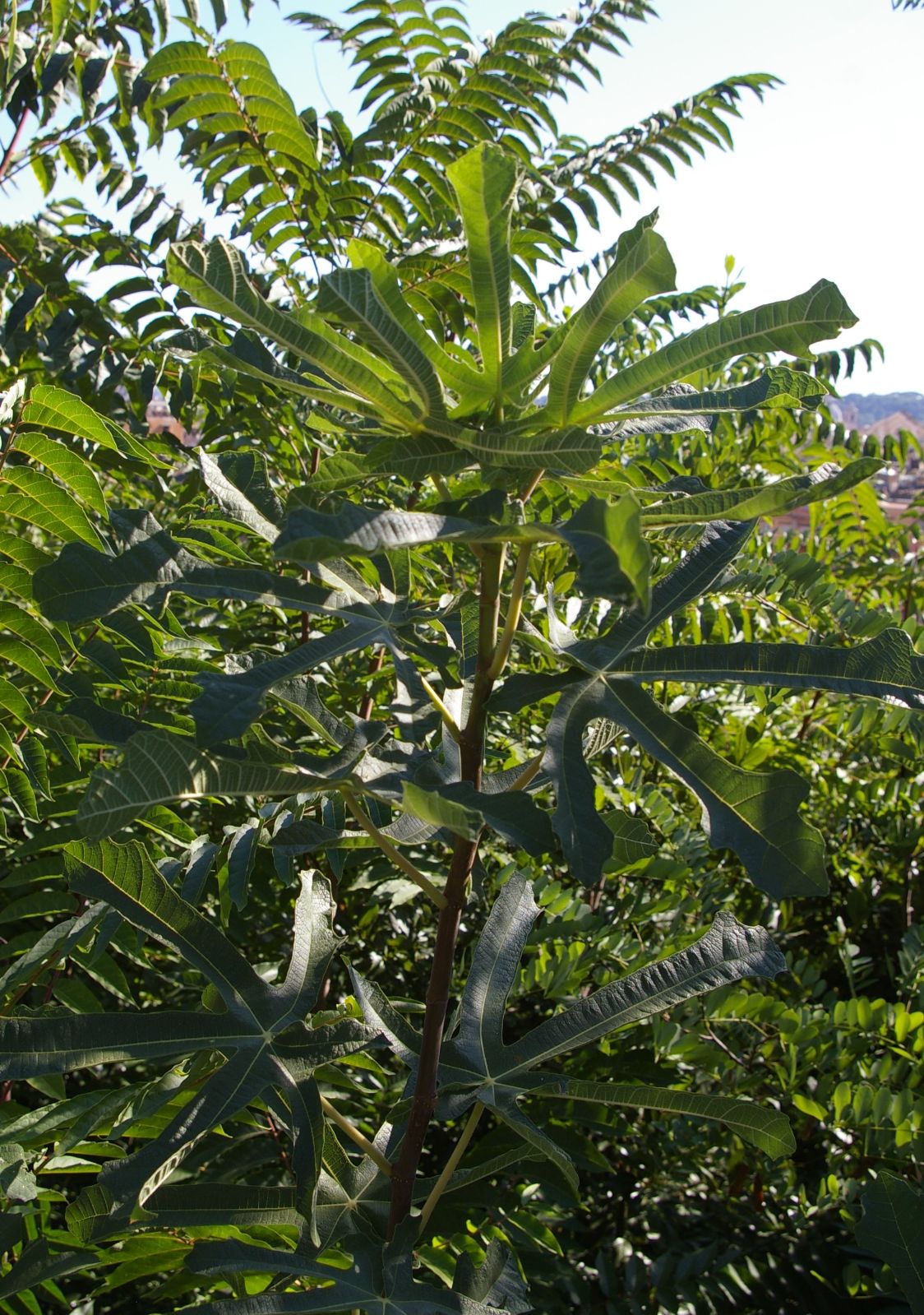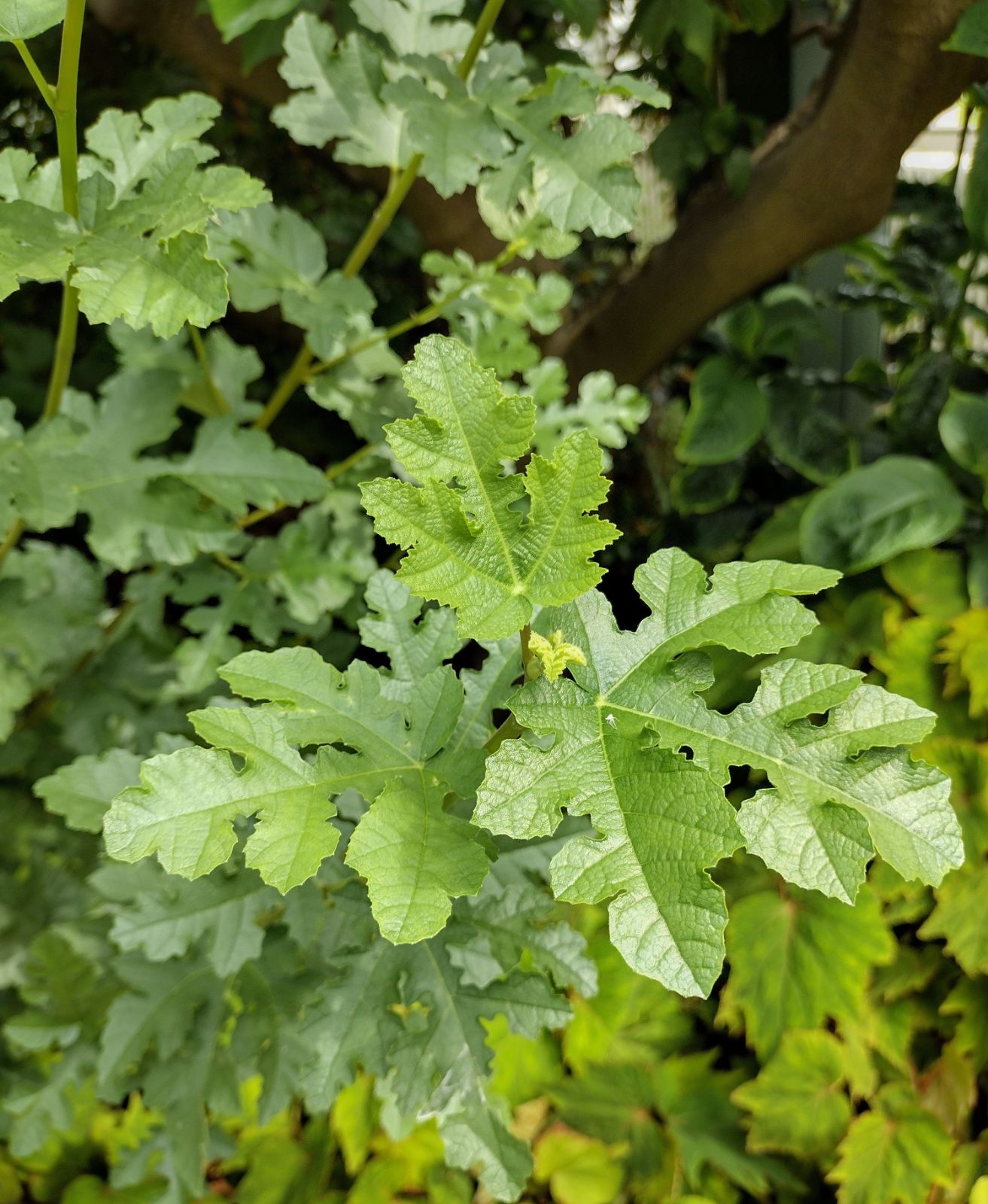Ficus
Credits
Article from Bean's Trees and Shrubs Hardy in the British Isles
Article from New Trees by John Grimshaw & Ross Bayton
Recommended citation
'Ficus' from the website Trees and Shrubs Online (treesandshrubsonline.
Family
- Moraceae
Common Names
- Figs
Ficus is a large pantropical genus of approximately 750 species, including around 500 species in Asia and Australia, around 150 in tropical America, and around 100 in Africa and Madagascar. Ficus species are trees, shrubs, climbers, stranglers or woody epiphytes, all having a milky sap. The leaves are alternate (rarely opposite or whorled), simple or lobed, with entire or dentate margins, and pinnate or subpalmate venation. Stipules are lateral to amplexicaul, free or fused together, often forming a caducous sheath around the terminal bud. The inflorescence in Ficus is a unique structure known as a syconium – a hollow structure containing minute flowers. Syconia are ovoid, globose or pyriform, and are produced in leaf axils or directly from the stem (cauliflory). After fertilisation they swell and turn into figs. Pollination is by female fig wasps (family Agaonidae). These enter the syconium via a small hole at its apex (the ostiole) and lay eggs in the ovaries of some female flowers, which then host the wasp larvae. Fig flowers are unisexual and the female flowers have two forms: short female flowers (gall flowers) are parasitised by fig wasps, but in long female flowers (seed flowers) the ovary cannot be reached by the wasps and in consequence these flowers set seed. Syconia may be hermaphrodite (with all three flower types) or functionally unisexual (male and gall flowers only, or seed flowers only). For example, the edible Common Fig F. carica produces unisexual syconia: those with male and gall flowers give rise to a fruit that is dry, pithy and inedible (caprifigs); those with seed flowers produce the edible fig (Rohwer 1993b).
Ficus is arguably one of the most important genera of trees in the world, at least in terms of its essential role in tropical forest ecosystems, where a tree in fruit will be a raucous centre of attention for birds and primates – though most are inedible to man. Generally receiving no attention at all (and showing it) are the numerous species used as houseplants and in interior landscaping. Among these long-suffering taxa are F. benjamina L. and F. elastica Roxb. ex Hornem., both of which metamorphose into trees of great beauty when grown in gardens in suitable conditions in the tropics, or even on the Mediterranean coast. From here it is only a short distance for evergreen figs to knock at the door of our area, especially in our currently warming climate.
There are some signs that this is already happening. Sean Hogan in Oregon is trying F. roxburghii Wall. outdoors (pers. comm. 2007), and F. auriculata Lour. has been tried outside, unsuccessfully, at the JC Raulston Arboretum. These are the vanguard, with others to come. It is clear that evergreen figs have generally been written off as garden prospects, but with such a huge diversity to investigate, an open mind and good provenances may yield some extraordinary surprises. At present, however, deciduous figs offer more certainty of success. In the Middle East and across central Asia there is a great diversity of forms and allies of F. carica and F. johannis to investigate, and Yucca Do Nursery of Hempstead, Texas (admittedly outside our area) has recently introduced F. lacor Buch.-Ham., a deciduous species from northern China that is claimed to be hardy from Zones 8b to 10 (Yucca Do 2008). This has lanceolate leaves that flush red, borne on wide-spreading branches, and is clearly a species that should be tried.
Bean’s Trees and Shrubs
Ficus
Fig
A large genus of evergreen trees, shrubs and climbers (some epiphytic), mainly confined to tropical and subtropical rain-forests. The most characteristic feature of the genus is the peculiar inflorescence, which consists of a concave receptacle almost closed at the mouth and containing numerous unisexual flowers. The fertile fruits consist of the enlarged and fleshy receptacle, containing numerous achenes (the ‘true’ fruits).




